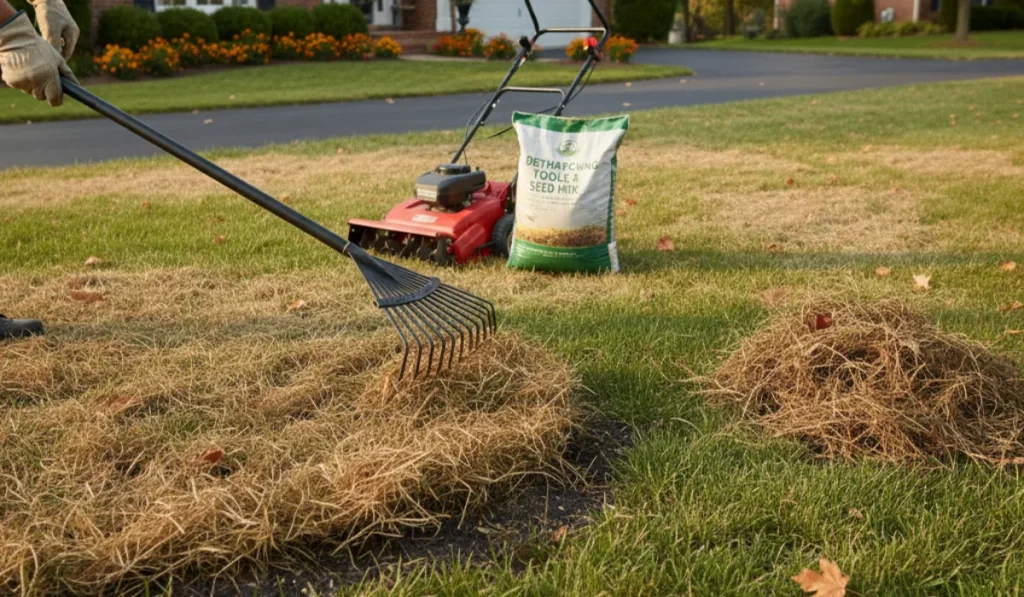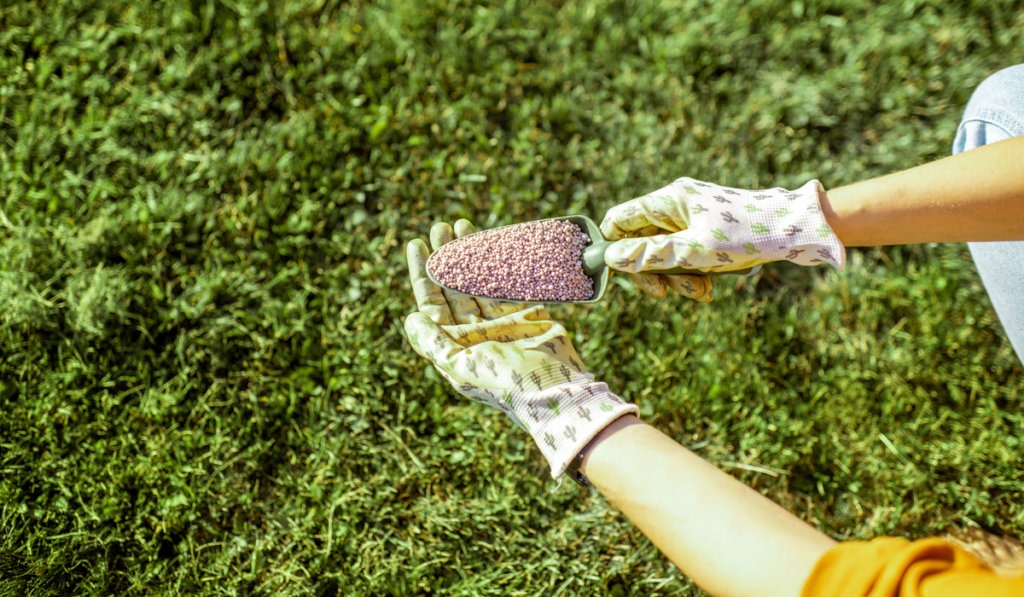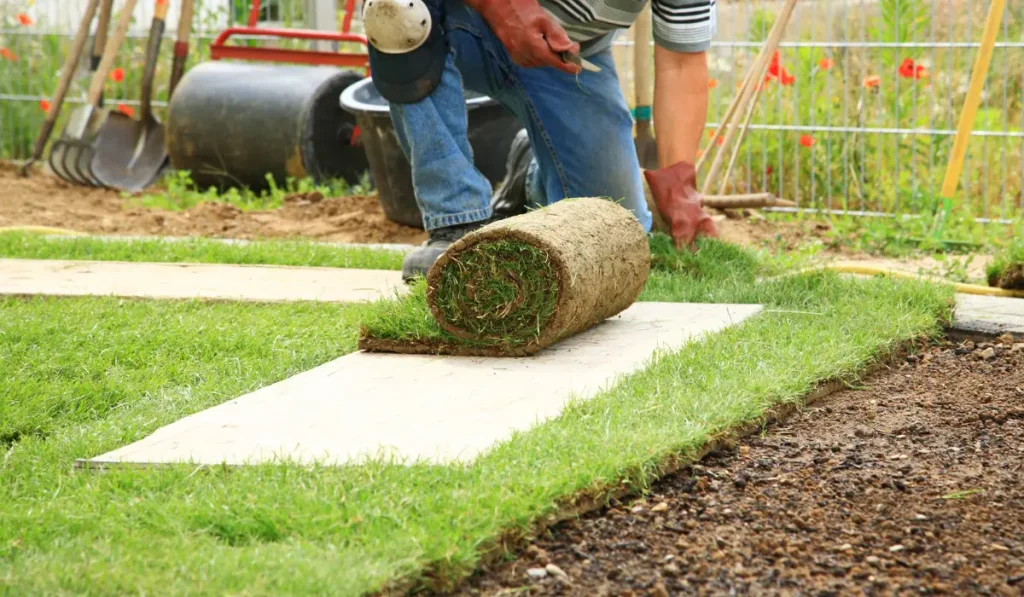You just had new sod installed, expecting a vibrant green lawn, but instead, you’re starting to see brown spots and bare patches. It’s disheartening, especially after investing time and money into your sod installation.
But here’s the good news: just because your new grass is turning brown doesn’t mean it’s dead. Most of the time, it is a fixable issue that comes down to water, soil, or timing.
Below, we’ll walk through four of the most common causes and give you practical sod care solutions tailored for homeowners across California, from the coast to the high desert.
Key Takeaways
- Brown sod usually means your new lawn is not getting enough water during the first few weeks after installation.
- Wet, soggy patches may be a sign that you are using too much water and causing root rot to form.
- Hard, compacted soil stops roots from growing deep and should be loosened with aeration after sod begins to settle.
- Some warm-season grasses turn brown under stress but will recover once they get light water and cooler weather.
1. Your Sod Isn’t Getting Enough Water
When your new lawn looks dry or crispy, it’s often the result of under-watering.
In many parts of California, the hot, dry climate means your sod lawn needs plenty of water to keep from drying out, especially during the first few weeks after you lay sod.
Without enough moisture, sod roots can’t establish themselves in the topsoil, and the grass turns brown fast.
Solution
Create a reliable watering schedule that gives your new sod short, frequent waterings: two to four times daily during the first two weeks.
Sprinklers and a well-tuned drip irrigation system can help distribute lots of water evenly, but don’t just set and forget. Check your soil moisture regularly and make sure you’re not leaving dry spots.
Once the root system begins to take hold, you can taper off and water less often but more deeply.
2. You’re Overwatering and Causing Root Rot
Too much of a good thing is a common problem, especially with overwatering.
When homeowners try to compensate for a lack of water by flooding the lawn, they can accidentally create conditions for root rot, particularly if the lawn has compacted soil or poor drainage.
Signs include slimy patches, a musty odor, or widespread brown patches that don’t respond to watering.
Solution
Dial back the watering. Let the soil dry out slightly between cycles so that the sod roots can breathe. This will help prevent bacterial and fungal growth.
In some cases, applying a fungicide may be necessary, especially if the lawn has stayed wet for several days.
Make sure your landscape slopes slightly away from your home to promote drainage, and check your irrigation system for leaks or oversaturation.
3. Soil Compaction Is Choking the Roots
If your new sod is sitting on heavily compacted or clay-based soil, the roots may not be able to grow into the topsoil properly.
This is a common issue in new housing developments, where construction has left the ground hard-packed and full of debris.
Without enough airflow or room to grow, your sod needs, like oxygen and nutrients, just can’t be met.
Solution
If you haven’t laid the sod yet, loosen the soil by tilling or raking 4–6 inches deep and mixing in compost or sand.
If you already have new sod installed, give it a few weeks, then aerate the lawn with a core aerator to break up the compaction. This helps water and air reach the root system.
Aeration is also a good long-term lawn care practice that should be done once or twice a year, especially in high-traffic areas.
4. Your Grass Is Dormant from Heat or Stress
If your type of grass is a warm-season variety like bermuda grass, zoysia, or St. Augustine, it can enter dormancy in response to stress from heat, drought, or even transplant shock.
This is particularly common in Southern California or inland areas where daytime temperatures can spike above 90°F during sod installation.
In dormancy, the grass turns brown, but it’s still alive underneath.
Solution
Keep watering just enough to support the grass, typically 1 to 1.5 inches per week.
Don’t fertilize or mow during heat stress, and avoid walking on the lawn. Allow the root system time to adjust, and it should green up again once temperatures stabilize.
If you’re unsure whether the sod is dormant or dead, gently tug on the blades. If they resist, the roots are still alive and kicking.
Get Your Sod Lawn Back on Track
Whether your new sod is struggling from too much water, under-watering, poor soil prep, or stress, the fix starts with knowing what your sod needs.
At SodLawn, we help California homeowners pick the right grass seed, prep their soil correctly, and install sod the right way the first time.
Need help troubleshooting brown patches or preparing your yard for a fresh install?
Contact us today for expert advice on sod installation, maintenance, and recovery, so you can enjoy a lush green lawn that thrives all year round.
Frequently Asked Questions
How soon can I mow after sod installation?
You should wait until your sod is well-rooted before mowing, usually around two to three weeks. Tug gently on the grass first. If it resists, it’s ready for a light, high cut. Only cut 1/3 of the blade height at a time to avoid stressing the grass.
Can weeds grow through new sod?
Yes, weeds can still emerge through seams or weak areas in new sod. Applying a safe pre-emergent after a few weeks helps, but proper soil prep and watering are your first defense.
Is it okay to install sod in the summer?
Yes, you can install sod in summer, but it requires more careful watering and monitoring. Hot weather dries out soil quickly, so you’ll need to follow a strict watering schedule from day one.



